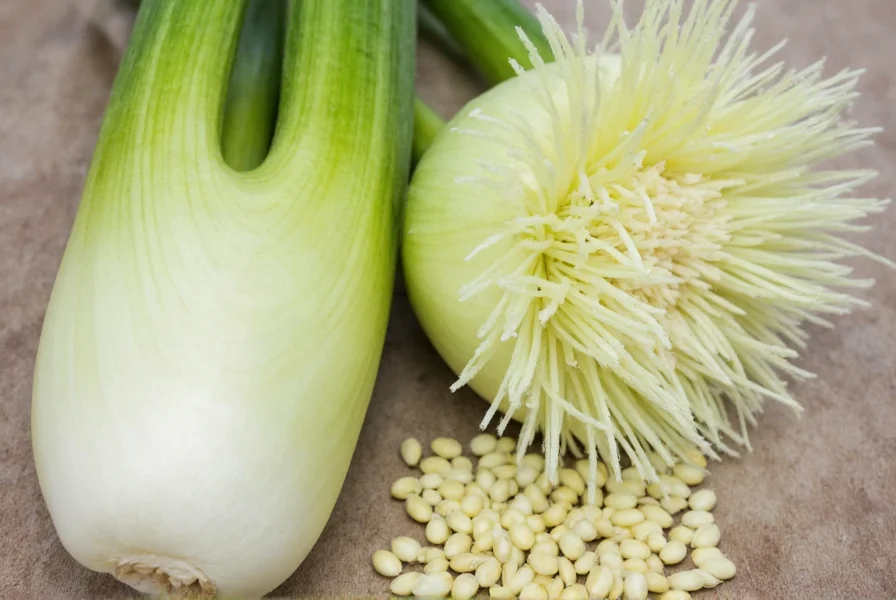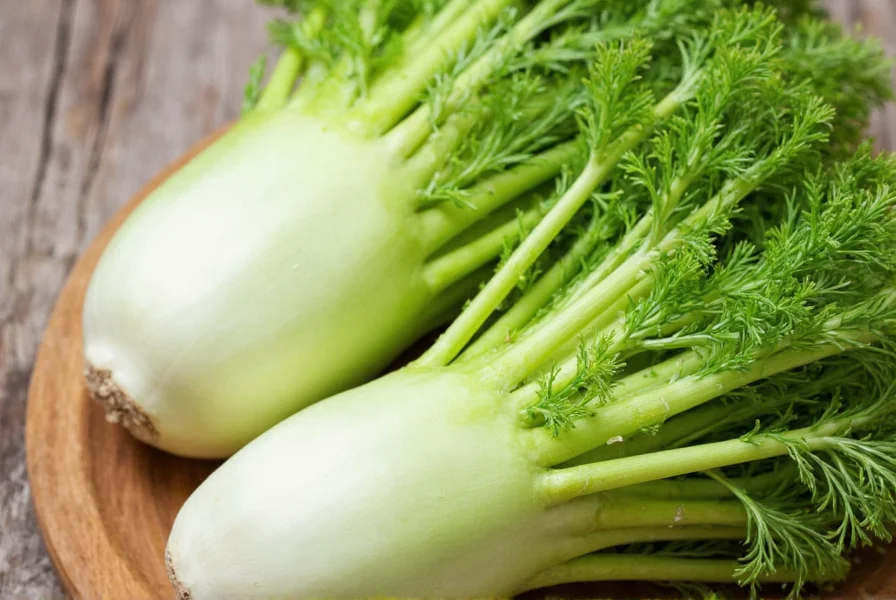Fennel stands as one of nature's most versatile botanical gifts, offering distinctive anise-like flavor across multiple edible components. This perennial herb, scientifically classified as Foeniculum vulgare, belongs to the Apiaceae family alongside carrots, celery, and parsley. Unlike many herbs that offer only leaves or seeds, fennel provides three distinct culinary elements: the bulbous base, delicate feathery fronds, and aromatic seeds, each with unique flavor profiles and applications.
Botanical Characteristics and Varieties
Fennel grows as a hardy perennial in USDA zones 5-10, reaching heights of 3-5 feet when mature. The plant develops a distinctive swollen bulb at its base, composed of tightly packed leaf sheaths that form a crisp, layered structure. Above this bulb, hollow stalks support delicate, thread-like fronds that resemble dill but carry a sweeter, more pronounced anise flavor. During its second year, fennel produces clusters of small yellow flowers that eventually develop into the familiar fennel seeds.
Two primary varieties exist in cultivation:
| Variety | Characteristics | Primary Use |
|---|---|---|
| Sweet Fennel (Florence Fennel) | Develops large, bulbous base; milder flavor | Culinary (bulb consumption) |
| Bitter Fennel (Common Fennel) | Smaller bulb; stronger anise flavor; higher seed production | Seed harvesting and medicinal uses |
Culinary Applications Across Cultures
Chefs worldwide prize fennel for its complex flavor profile that transforms when cooked. Raw fennel bulb offers crisp texture with bright, licorice-like notes perfect for salads and slaws. When roasted or braised, the bulb undergoes caramelization that converts its natural sugars, yielding a sweet, mellow flavor reminiscent of onions and celery. Mediterranean cuisine features fennel prominently in Italian finocchiona sausage, French bouillabaisse, and Indian saunf spice blends.
The feathery fronds serve as both herb and garnish, adding delicate flavor to fish dishes, salad dressings, and compound butters. Fennel seeds, harvested when brown and dry, function as both spice and digestive aid across Ayurvedic and European folk medicine traditions. Understanding how to use fennel in cooking requires recognizing how each component transforms under different preparation methods.

Nutritional Profile and Health Benefits
Fennel delivers impressive nutritional value with minimal calories. A 100g serving of raw bulb contains just 31 calories while providing:
- 12% of daily vitamin C requirements
- 7% of potassium needs
- 3.1g dietary fiber (12% of daily value)
- Significant calcium and manganese content
Research indicates several potential health benefits of fennel, particularly related to digestive health. The compound anethole, responsible for fennel's characteristic flavor, demonstrates anti-inflammatory properties and may help relax gastrointestinal muscles. Traditional medicine systems have long used fennel tea to alleviate bloating and support lactation in nursing mothers. Modern studies suggest fennel extract may help reduce symptoms of irritable bowel syndrome when used consistently.
Growing Fennel Successfully
Cultivating fennel requires specific conditions for optimal development. The plant prefers full sun and well-draining soil with a pH between 5.5-7.0. When growing fennel at home, gardeners should space plants 12-18 inches apart to allow bulb development. Blanching the lower portion of the bulb by mounding soil around the base creates a more tender, less fibrous texture. Sweet fennel varieties typically mature in 80-100 days from seed, with bulbs ready for harvest when 3-4 inches in diameter.
Understanding the difference between fennel and anise proves crucial for gardeners, as the plants look similar but have different growth habits. While fennel develops an edible bulb, anise (Pimpinella anisum) grows as a smaller annual without a bulbous base, producing only seeds for culinary use. Both contain anethole but in different concentrations, creating distinct flavor profiles.

Selecting and Storing Fennel
When choosing fennel at the market, look for firm, heavy bulbs with crisp white layers and vibrant green fronds. Avoid specimens with brown spots, splitting, or flowering stalks, which indicate maturity beyond peak freshness. Proper storage extends fennel's shelf life significantly—wrap the bulb in a damp paper towel inside a perforated plastic bag in the refrigerator's crisper drawer. This method preserves freshness for 7-10 days. Store fronds separately in a glass of water like fresh herbs.
Frequently Asked Questions
What is the difference between fennel bulb and fennel seeds?
Fennel bulb refers to the crisp, white base of the Florence fennel plant, used as a vegetable with mild anise flavor. Fennel seeds come from the mature flower heads of common fennel, offering concentrated flavor and used primarily as a spice. The bulb contains less anethole (the compound responsible for licorice flavor) than the seeds, making it milder and more versatile in cooking applications.
Can you eat all parts of the fennel plant?
Yes, all parts of the fennel plant are edible. The bulb serves as a crunchy vegetable raw or transforms when cooked. The feathery fronds function as a fresh herb similar to dill. The stalks work well in stocks and soups. The seeds, harvested when mature and brown, provide intense flavor as a spice. Even the pollen, sometimes called "fennel flower," offers concentrated flavor for finishing dishes.
Is fennel the same as anise or dill?
No, fennel differs from both anise and dill despite similar appearances and flavors. Fennel (Foeniculum vulgare) develops an edible bulb, while anise (Pimpinella anisum) is grown solely for its seeds. Dill (Anethum graveolens) belongs to the same plant family but has a different flavor profile and grows as a more delicate annual without a bulbous base. All three contain anethole but in varying concentrations, creating distinct culinary characteristics.
How does cooking affect fennel's flavor?
Raw fennel bulb has a crisp texture with bright, pronounced anise flavor. When cooked, fennel undergoes significant transformation—the natural sugars caramelize, reducing the licorice notes and developing sweet, mellow flavors similar to onions and celery. Roasting brings out nutty undertones, while braising creates tender, almost potato-like texture. The longer fennel cooks, the more its flavor mellows and integrates with other ingredients in a dish.











 浙公网安备
33010002000092号
浙公网安备
33010002000092号 浙B2-20120091-4
浙B2-20120091-4